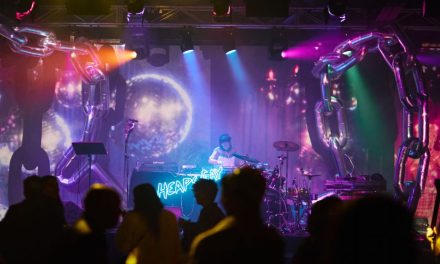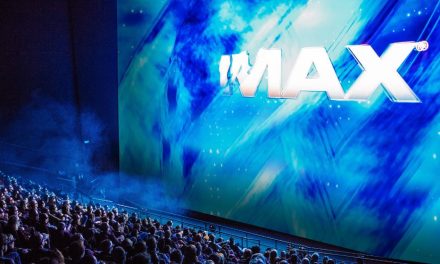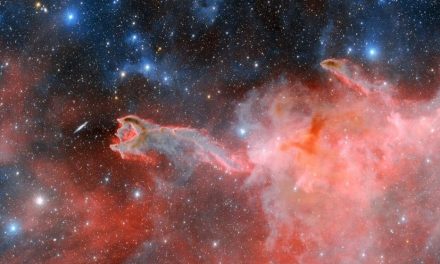There’s a scene early on in Godzilla 2 – King of the Monsters, that elegantly sums up its strengths and weaknesses. We’re on a high-tech underwater base, and they detect Godzilla approaching. They open the hatch, and there he is, slowly swimming towards them, eyes and back ridges pulsing with light as he gets closer. Kyle Chandler’s character tells them to stand down, that this is meant to intimidate. It seems to work and Godzilla breaks off for a moment, only to go flying past the window, his signature roar absolutely deafening.
It nearly sums up the film’s features, good and bad. The special effects, the look and sound of the scene and the eerie effect of an ancient titan looming out of the water are all amazing. However, it’s all undercut by the fact that this turns out not to even be meant for the underwater base (even though he swims right at it and reacts to what they do) but for the yet to be seen Ghidorah. The jokes that the characters crack feel crammed in, and then there’s the entirety of Kyle Chandler’s character.
He’s our main protagonist as we follow Godzilla’s old enemy re-emerging for a new showdown. Chandler looks the part and is a reliably good actor but is awkwardly written. He’s simultaneously the guy who needs things explained to him (and thus the audience) but also hyper-competent, far more than all the characters who’ve been studying and working on this problem for the last twenty years. In fact, no one else on the giant monster specialist Monarch team, who’ve been studying and anticipating them for decades, manages to get anything right without him telling them what to do. Ironically, the less he’s in a scene, the better it seems to work, as if he was a later addition to the script.
Generally, the movie doesn’t quite know how to fit human stories into its expanding world of emerging Super-monsters. In another scene, Ghidorah, Godzilla’s fellow Apex monster, the many headed great red dragon, explicitly coded to be Satan, pauses for a moment to wipe out a squad of soldiers firing ineffectively at it. It’s a sharp contrast to the brilliant gag in 2014’s Godzilla (to which this is a direct sequel) where soldiers fire at Godzilla, only to realise the absurdity of what they’re doing and stop without Godzilla even noticing that they’d done so. For god like creatures that are poised to reshape the earth just by their presence, the monsters seem to need to put a lot of effort into killing individual humans.
The film has a bit of shame for its material. It touches on some of the more absurd aspects of Godzilla’s 60 plus years of frankly bizarre lore, with nods to aliens and psychic twins, but won’t fully commit to them. It doesn’t trust its audience to find all this interesting enough without some sort of grounding, which is frankly weird. Somebody looked at a film where two giant monsters representing, respectively, the forces of redemption and those of pure evil, have a gigantic, continent destroying fight for the soul of earth and thought ‘we need more personal drama.’ And so we awkwardly follow some very undeveloped family drama for huge chunks of its length.
All the Godzilla films feature a lot of non-Godzilla stuff. The difference is that, as crazy, campy and downright bizarre as that stuff might be, it’s rarely dull and it informs the rest of the plot and guides us to the next big monster smashing stuff scene. The film makers clearly knew that the film would end with giant monsters smashing up a city but didn’t know how to get there. The down time really does feel like downtime. It’s lacking energy and focus. The 2014 film was criticised for having too much non-monster time, but it used it with purpose. Every scene was building to the next crescendo, guiding the audience in anticipation. We’re always following Godzilla or the marks of his passage, or seeing him through a frame, be it a window, goggles or a camera lens. We finally see him without any of that in the last act of the film.
KOTM didn’t have to follow that blueprint (after all, it’s already been used) but it doesn’t quite seem to know what to do with its downtime. The human villains barely get anything to do or say (I don’t know how you hire Charles Dance to be in a movie about giant monsters and don’t give him a huge monologue) and the scenes with our heroes are just a montage of Kyle Chandler being right. The worldwide effects of the plot are largely off screen.
That said, the big scenes that they don’t quite know how to build to are utterly spectacular. Film making technology has finally caught up with the idea of giant monsters, and the results are astounding and beautiful. Every shot of the monsters is a masterpiece. The shot of Ghidorah flexing its wings as lightning pours off him is one of the most amazing shots of the last few years of blockbuster film-making. The monster fights are huge but also able to be followed. It’s a full six pack of a film, but it lacks the plastic thingy that holds it all together.
6.5/10






